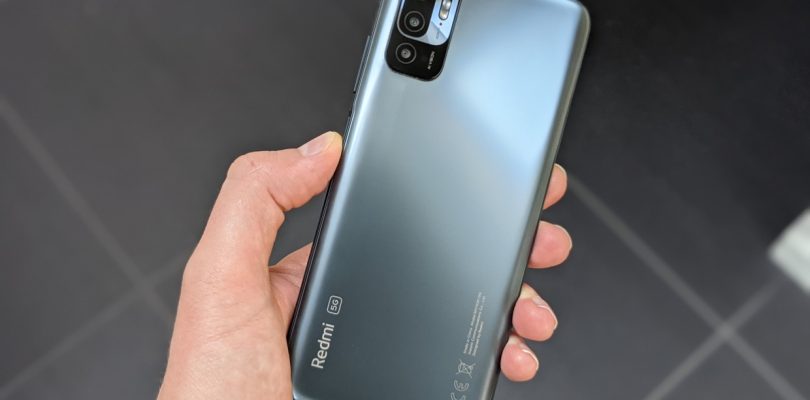We are going to review one of the most recent Xiaomi smartphones. They should not be confused with the Redmi Note range from the same manufacturer presented several months ago and which we already analyzed on the blog. We will see to what extent it will be advisable to buy it or opt for any other smartphone within Xiaomi’s ecosystem.
Before starting the review, I would like to thank the Gobo store for sending us this Xiaomi Redmi 10. This article will analyze it and say if it is a recommended purchase option, or on the contrary, if it would be advisable to acquire another smartphone from the Xiaomi ecosystem itself. With more time on the market, such as the Poco range or the Redmi Note range.
As Xiaomi has been doing in recent years with this range, this Redmi 10 comes in a white box with the smartphone’s image, the logo, and the model name on the front. The information on the model and the most notable features come on one of the sides. Inside, a small envelope contains:
- The transparent TPU cover.
- The start-up and warranty guides.
- The little pin to access the SIM cardholder.
Below is the smartphone covered with the well-known onion paper. At the bottom of the box is the USB to USB Type-C charging cable and the 18W power charger.
I think they should have incorporated 25 or 33W of fast-charging power since smartphones within the company have similar prices and this feature that I mention.
software
As for the software, and as many of you already know, it has the famous MIUI customization layer in its version 12.5.1 that runs under Android 11. Xiaomi is one of the brands that most updates its devices; however, when it comes to the Lower end of the manufacturer most likely will not receive as many version updates as other models, and it will only be security patches and bug fix patches.
This smartphone is the global version, so it has a multilanguage system with practically all languages, such as Spanish, English, German, Portuguese, French, etc.
In addition, and how could it be otherwise, it has the pre-installed Play Store application store and a few Google applications such as YouTube, YT Music, Play Movies, Photos, Duo, Gmail, Maps, Drive, News, Calendar, etc.
In addition, the manufacturer itself has wanted to add its own and third-party applications. These are the following: Netflix, Xiaomi Store, My Community, Weather, My Video, Facebook, Amazon, TikTok, Tile Fun, Buble Shooter, Jewels Blast, Lords Mobile, etc. This time, I think they have been adding applications (bloatware). The first thing I have done is uninstall most of the applications.
To check that everything was correct, I have passed the Malwarebytes antivirus, and it has not detected anything abnormal and suspicious that could put the security of the terminal at risk.
The MIUI customization layer offers a lot of customization and different configuration modes such as “dark mode,” the possibility of hiding the camera on the screen or changing the Hz of the screen from 60 to 90Hz to get a better experience in the system. I mention the latter because, unlike other smartphones that I have tried, it does not have the maximum refresh rate activated, and you have to go to the settings menu to modify it.
It also has the possibility of screen recording, floating windows, or a “Lite” system. It increases the size of the icons and facilitates interactions with the terminal for people who may have more difficulty.
It incorporates gestures on the screen, the possibility of sharing the screen through a WiFi connection.
In addition, for lovers of “streaming,” it has the Widevine L1 encryption codec to enjoy Netflix and other platforms in high resolution.
Antimalware
Facial recognition, with good light, works quite fast, as you can see in the video that I will leave you next.
Finally, I would like to add and despite having a 90Hz screen, I have noticed it is poorly optimized; that is, I think it lacked fluency when navigating through menus or opening applications. I hope you receive an update and try to solve this problem.
Settings
Design and Materials
This Xiaomi Redmi 10 has a continuous design with a plastic finish. We immediately realize that it is not a mid-range or high-end smartphone, clearly distinguishing the construction materials when we have it in hand. The side frame does not reach the beginning of the screen. It is as if the plastic edges of the screen are embedded in the chassis of the terminal. Something ugly and poor-looking.
The dimensions of this Redmi 10 are as follows: 75.5 mm long x 161.9 mm high x 8.9 mm thick and 181 grams. It is a reasonably large smartphone, but with a very moderate weight. From my point of view and to differentiate between the different terminals of the manufacturer itself, such as the Redmi Note family, I think they should bet on a more compact or smaller smartphone.
It has a 6.5-inch LTPS LCD screen with an FHD + resolution (1080x 2400 lines) that provides 405 pixels per inch. Regarding quality, it does not stand out at all. However, it is appreciated that they have stopped using HD resolution for this type of low-end smartphone and have incorporated a higher screen refresh rate.
It has Corning Gorilla Glass 3 protection that provides toughness in case of falls.
The front is all screen and does not have any physical buttons. The front camera is integrated into the central part next to the call speaker.
On the right side is the typical volume up and down button followed by the lock button, which is the fingerprint reader. This works well, it is quite fast and accurate, and I have to admit that together with the facial unlocking, they do the right job regardless of the terminal price. The left side is the access to the dual nano-SIM tray and the microSD.
At the bottom, we find the USB type C connector centered and on the right side is the speaker, and on the other side is the microphone.
This is a stereo speaker with which it is heard quite loud. However, the sound is not as expected; it sounds quite metallic, not achieving the sound quality of other smartphones with similar prices. At the top, there is an opening for the other call speaker next to the infrared LED. We’ll also look at the 3.5mm headphone jack and noise-canceling microphone.
The back of this Redmi 10 has a large camera module that protrudes 2 or 3 mm from the chassis and in which we find 4 cameras and a flash. Be careful not to grate it.
I’m going to start this section by saying that it mounts the Mediatek Helio G88 64-bit processor manufactured in 12 nm. This processor has 8 cores with a configuration in six of its cores, ARM Cortex A55 capable of reaching a speed of 1.8GHz to perform the least demanding tasks. The other two cores with an ARM Cortex A75 configuration can reach 2GHz speed for tasks that require higher performance. In addition, it is accompanied by an ARM Mali G52 MC2 with a frequency of 1000MHz.
There are several configurations of this Xiaomi Redmi 10 ranging from 4GB to 6GB of RAM (LPDDR4X) and internal storage memory of 64GB and 128GB (eMMC 5.1) expandable by microSD. This data may be the one that tarnishes the characteristics of the smartphone since it is a type of old memory with relatively low data reading and writing speeds, thus slowing down the feeling with the device.
On this occasion, and to not influence the result, I have uninstalled all the “junk” applications that came in the terminal’s personalization layer to pass the synthetic test “AnTuTu Benchmark v9.1.2” and check the power and performance of the smartphone.




